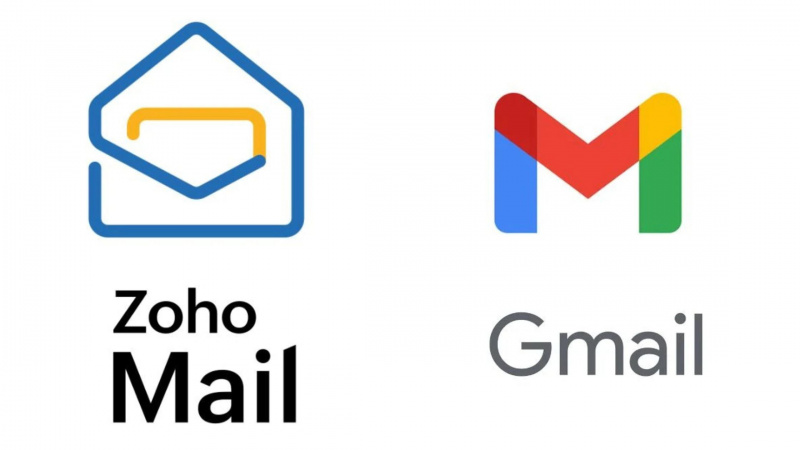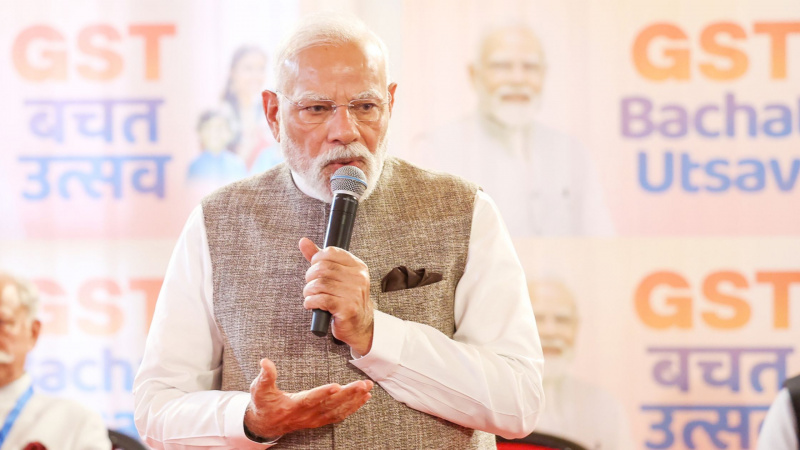5G auction over, Jio tops the table with ₹88,078 crore in bid
He added that by spending Rs 40,000 crore, Airtel was able to offer internal speeds between 7 and 8 Mbps. "Now you can take 50 million homes in India, and they
- by B2B Desk 2022-08-02 06:56:08
The government mopped up a record over Rs 1.5 lakh crore in India's first 5G spectrum auction which ended on Monday, with Reliance Jio emerging as the highest bidder.
After 40 rounds over seven consecutive days, market leader Jio captured 24,740 MHz of 5G radio waves, which can provide mobile internet speeds 10 times faster than 4G, at a whopping Rs 88,078 crore, which contributed about 59% to the core fund.
Jio's purchases included frequencies in the ultra-efficient but expensive 700 MHz band, as well as the 1800 MHz (East) band. She gained 10 MHz of band on the circuit after a tough battle with her.
Airtel, which paid Rs 1,646 crore and took the price almost 81% above its base price, said officials familiar with the matter.
Bharti Airtel, the country's second largest telecom operator, bought 19867.8MHz of bandwidth worth Rs 43,084 crore while it was cash strapped.
Vodafone Idea has spent Rs 18,799 crore to buy 6,228 MHz of radio waves. Newcomer Adani Data Networks, a unit of the diversified Adani Group, has made modest purchases of Rs 212 crore for 400 MHz of spectrum across six cities in the 26 GHz band just this time, just for the restricted needs of the private network.
Jio's sudden buy of the coveted but expensive pan-Indian airwaves in the 700 MHz band may give it a competitive advantage over arch-rival Airtel, in the quality of 5G coverage and may help it gain more premium customers and market share. of income in the future months, say analysts.
For its part, Bharti Airtel said that it has followed the strategy of buying the best spectrum kits at a much lower cost compared to the competition.
A company official added that Airtel does not need the 700MHz band due to its strong spectrum in the 1800 and 2100MHz bands. "So for half the price, we could remove the liver 100 times."
He added that by spending Rs 40,000 crore, Airtel was able to offer internal speeds between 7 and 8 Mbps. "Now you can take 50 million homes in India, and they all have 50 or 100 Mbps WiFi, so what is this business of five Mbps, seven Mbps? So today with our band of 850 and 900, we can in any case get rid of the liver in the depths of the house at a speed of 3-4 Mbps ".
Analysts said Vodafone Idea (Vi) is likely to be more vulnerable to customer and revenue share losses following the launch of 5G by the two largest telecoms operators later this year.

"Certainly this (auction) result is better than everyone expected, all stakeholders including industry and investors. Everyone expected it to be in the range of Rs 80,000 to Rs 1 crore. The Minister of Communications, Ashwini Vaishnau, told reporters after the sale ended, which brought in Rs 1,50,173 crore, "So this is definitely amazing."
He added that all auction procedures, including spectrum allocation, will be completed within the next 10-12 days and he expects operators to start rolling out 5G service in October.
Vaishnau said the amount of spectrum purchased is good enough to cover the entire country and the government hopes to have that coverage within two to three years. During this time period, Vaishnau expects the industry to reach Rs 2-3 crore.
Jio is committed to providing affordable, world-class services that support 5G and 5G networks. We will provide services, platforms and solutions that will accelerate India's digital reform, particularly in critical sectors such as education, healthcare, agriculture, manufacturing and e-government.”, Akash M. Ambani, Chairman, Jio, he said in a statement.
"This spectrum acquisition in the recent auction was part of a deliberate strategy to acquire the best spectrum assets at a much lower relative cost compared to our competition. This will allow us to raise the bar of innovation and address the emerging needs of each expert". customer accommodating the best experience in India.” Gopal Vital, Managing Director and CEO (India and South Asia), said:
Bharti Airtel in an official statement.
The auction for 5G spectrum, which also provides lag-free connectivity and can enable billions of connected devices to share data in real time, was expected to last just two days. But it worked for a week, largely fueled by intense bids for 1800 MHz antennas in the main UP (East) market, driving the unit price of this spectrum to almost Rs 163 crore per unit compared to the price basis of 91 rupees. crores. Telecommunication companies have spent more than 10,376 crores on the scale.
The bidding competition in1,800MHz for the highest (East) was a capacity game, Vaishnaw said. He referred to the 1800MHz band as good for expanding operator capacity to meet growing data demand. “There was good competition as one operator had 5 MHz and another wanted 5 MHz,” he said.
The Centre garnered its highest auction revenue in its history, mainly on the back of the 700 MHz band, which only Jio bought. The band did not sell in the previous two auctions, but the price has been reduced by 40% for this sale, from the 2021 base price. This time he contributed more (Rs 39,270 crore) to the government fund.
In addition to the 700 MHz band, Jio has purchased most of its airwaves in the coveted C-band or mid-band (3.3-3.67 GHz) and 26 GHz to meet the coverage and capacity needs of a network. Rugged pan-India 5G that can withstand the challenges. to counteract data consumption and post-post operations. To achieve this, it also gained more spectrum in the 800MHz, 1800MHz and 2300MHz bands.
Like Jio, the Sunil Mittal-led operator has bought 5G spectrum in the 3.3-3.67 GHz and 26 GHz bands and selectively repackaged it into 900 MHz, 1800 MHz and 2100 MHz frequencies to effectively compete with Jio for pan-India 5G coverage.
“Acquiring this huge amount of spectrum tied to a spectrum pool that is already in the industry means that the company does not need to spend money on spectrum for many years. In addition, the acquisition of this spectrum has allowed Airtel to reduce revenue significantly. Spectrum Usage Charges (SUC) and eliminate adverse SUC compensation compared to new entrants,” Airtel said in its statement.
“We have successfully secured mid-band 5G spectrum (3300 MHz band) on our 17 priority circuits and mmWave 5G spectrum (26 GHz band) on 16 circuits, which will allow us to offer a superior 5G experience to our customers as well,” Vodafone Idea said in a statement. Ella: “How to enhance our business offerings and provide new opportunities for business growth in the emerging 5G era.”
When trading closes on Monday at BSE,
Reliance industries shares of NSE rose 0.47% by 2.6% to Rs 2,575.1, while shares of Bharti Airtel rose 2.4% to Rs 694.20. Vodafone Idea shares rose 4% to end the day at Rs 9.12. share
Adani Enterprises the promoter of Adani Data Networks, rose 3.4% to Rs 2,658.90.
“The combination of 700 MHz spectrum and C-band (3.3 GHz) should give Jio an overall competitive advantage against Airtel and Vodafone Idea, with the operator potentially achieving gains of around 350-500 bps in market share. revenue (RMS) for the next 2-3 years,” Rohan Damija, head (India and Middle East) at Analysys Mason.
He added that going forward, Jio's and Airtel's larger nationwide airwave holdings in mid- and high-band compared to Vi-spectrum's more modest purchases should increase Jio's and Airtel's overall dominance in low-band services. wide for 5G mobile phones.
In this year's auction, the government offered over 72 GHz of air shadow for 20 years in 10 5G bands worth Rs 4.3 crore at reserve prices. Radio waves were low band (600 MHz, 700 MHz, 800 MHz, 900 MHz, 1800 MHz, 2100 MHz, 2300 MHz, 2500 MHz), medium wave or C-band (3.3-3.67 GHz) and medium wave or high wave band (26GHz).
The final government mop of Rs 1,50,173 crore was almost double the Rs 77,814 crore mop surveyed in the March 2021 sale and significantly more than the Rs 1,09,874 crore raised in the auction of March 2015 for 19 days. This time, the government sold about 71% of the 72+ GHz of airwaves it put on the table. Experts said this is because 86% of the radio waves on display consist of the low-priced 26 GHz spectrum.
With the exception of the 1800MHz spectrum in UP (East), all remaining offers were sold at the base price.
Vaishnau said the industry's annual premium for purchased spectrum would be Rs 13,365 crore, including 7.2% interest.
"Those with a lower cost of capital may choose to pay more up front," he added.
Credit Suisse estimates that the government is likely to receive $1.8 billion in down payment in FY23 from 5G auctions, assuming bidders use the fully deferred payment option (over 20 years). Anna List said this could be beneficial because the government, facing high inflation, could also use the money to reduce its fiscal deficit.
The government offered easier payment options for the sale. It eliminated the repetition of bids to win bids and allowed payments in equal annual installments for 20 years to facilitate the financial flows of bidders. This time, the government has also allowed spectrum to be assigned after 10 years with no future commitments. In addition, it eliminated the Spectrum Usage Charge (SUC) for newly purchased airwaves in the mixed auction, and even eliminated the need for bank guarantees to alleviate the commercial cost of operators.
Analysts say, scrapping of the SUC switch has been one of the main drivers of operators entering large numbers of the 26GHz band.
"India has finally jumped on the 5G bandwagon. In the next six to eight months, consumers will begin to experience 5G services first-hand: downloading high-speed mobile broadband content in seconds and seamlessly connecting via HD video calls." Prashant Singhal, EY Global TMT Emerging Markets Leader.
Also Read: Home loan borrowers face higher outgo in goodbye to easy money

POPULAR POSTS
The Agentic Revolution: Why Salesforce Is Betting Its Future on AI Agents
by Shan, 2025-11-05 10:29:23
OpenAI Offers ChatGPT Go Free in India: What’s Behind This Big AI Giveaway?
by Shan, 2025-10-28 12:19:11
Zoho Products: Complete List, Launch Years, and What Each One Does
by Shan, 2025-10-13 12:11:43
Arattai vs WhatsApp: Which Messaging App Should You Choose in 2025?
by Shan, 2025-10-10 11:55:06
Top Buy Now Pay Later (BNPL) Apps for Easy Shopping in 2025
by Shan, 2025-09-22 10:56:23
iPhone 17 Sale in India Begins: Full Price List, Launch Offers and Store Availability
by Shan, 2025-09-19 12:00:45
Apple September 2025 Event Recap: iPhone 17, iPhone Air, Apple Watch Series 11, and India Pricing Revealed
by Shan, 2025-09-10 09:55:45
RECENTLY PUBLISHED

Loan EMIs to Drop as RBI Slashes Repo Rate - Full MPC December 2025 Highlights
- by Shan, 2025-12-05 11:49:44

Pine Labs IPO 2025: Listing Date, Grey Market Premium, and Expert Outlook
- by Shan, 2025-11-05 09:57:07

Top 10 Insurance Companies in India 2026: Life, Health, and General Insurance Leaders Explained
- by Shan, 2025-10-30 10:06:42

Best Silver Investment Platforms for 2025: From CFDs to Digital Vaults Explained
- by Shan, 2025-10-23 12:22:46

Zoho Mail vs Gmail (2025): Which Email Platform Is Best for Businesses, Startups, and Students?
- by Shan, 2025-10-09 12:17:26

PM Modi Launches GST Bachat Utsav: Lower Taxes, More Savings for Every Indian Household
- by Shan, 2025-09-24 12:20:59




 Subscribe now
Subscribe now 